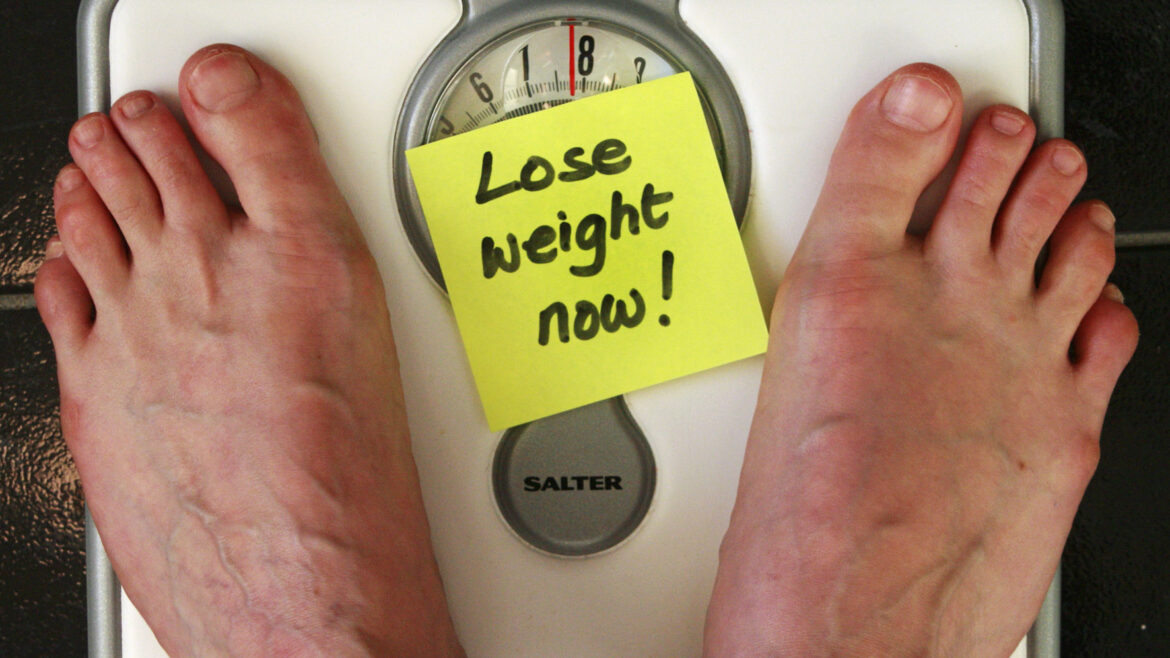Elevate Life: A Guide to Physical Activity and Health
https://icdrc.org/wp-content/themes/osmosis/images/empty/thumbnail.jpg 150 150 admin admin https://secure.gravatar.com/avatar/693ccb227eb6527287caaa4e9eb13c6e?s=96&d=mm&r=g
Introduction:
In a world dominated by sedentary lifestyles and the pervasive presence of screens, the significance of physical activity cannot be overstated. This comprehensive guide takes a deep dive into the multifaceted realm of physical activity, starting with an exploration of its historical roots. It then delves into the myriad health benefits it offers, shedding light on the science behind its profound impact on both the body and mind. The guide goes beyond theoretical insights, providing practical strategies to help individuals seamlessly incorporate movement into their daily lives. By addressing the historical context, health benefits, scientific underpinnings, and practical implementation, this guide aims to empower readers to prioritize and embrace physical activity as a crucial component of a healthy and balanced lifestyle.
I. The Evolution of Physical Activity:
A. Historical Perspectives:
This exploration delves into the historical roots of physical activity, tracing its origins from early human survival needs to the incorporation of practices like martial arts and yoga in ancient societies. It seeks to unravel how physical activity was seamlessly woven into the fabric of daily life across various cultures throughout history. By examining the evolution of physical activity from its essential role in survival to its cultural manifestations in practices like martial arts and yoga, this examination sheds light on the diverse ways in which different societies integrated movement into their daily routines. Understanding this historical context provides valuable insights into the intrinsic connection between physical activity and human life across epochs and civilizations.
B. The Industrial Revolution and the Shift to Sedentary Lifestyles:
The impact of industrialization on physical activity patterns has been profound, marked by the emergence of sedentary jobs and a subsequent rise in health-related issues. As societies transitioned from agrarian and manual labor-based economies to industrialized ones, there was a notable shift in occupational roles. The rise of sedentary jobs, characterized by prolonged periods of sitting and reduced physical exertion, became a prevalent feature of the industrial era. This transformation in work patterns, coupled with technological advancements that further reduced the need for physical labor, contributed to a decline in overall physical activity levels. Consequently, this shift has been linked to a rise in health-related issues such as obesity, cardiovascular diseases, and other sedentary lifestyle-related conditions. Understanding the implications of industrialization on physical activity underscores the importance of addressing the challenges posed by modern work environments and promoting strategies to encourage active lifestyles in the face of these shifts.
II. The Science Behind Physical Activity:
A. Physical Health Benefits:
This exploration focuses on how regular physical activity contributes significantly to various aspects of health. Engaging in regular physical activity has been found to play a crucial role in promoting cardiovascular health, maintaining bone density, and effectively managing weight. Beyond these immediate benefits, exercise also proves instrumental in preventing chronic conditions such as diabetes, hypertension, and obesity. The positive impact of regular physical activity on these health parameters underscores its holistic importance, not only for physical fitness but also for long-term well-being. Understanding the multifaceted contributions of exercise to cardiovascular health, bone density, weight management, and chronic disease prevention emphasizes the pivotal role of incorporating regular physical activity into one’s lifestyle for overall health optimization.
B. Mental Health and Cognitive Benefits:
The profound impact of physical activity on mental health is a key focus, encompassing various benefits such as stress reduction, improved mood, and enhanced cognitive function. Engaging in regular physical activity has been consistently associated with alleviating stress and contributing to a more positive mood. Furthermore, exercise has been shown to enhance cognitive functions such as memory and concentration. Beyond these immediate mental health advantages, there exists a notable link between exercise and the prevention of mental health disorders. Research indicates that regular physical activity can play a preventative role in conditions like depression, anxiety, and other mental health disorders. Understanding the interconnected relationship between physical activity and mental well-being highlights the importance of incorporating exercise as a holistic approach to promoting mental health and preventing mental health disorders.
C. Hormonal and Neurological Responses:
Understanding the physiological aspects of physical activity involves recognizing the release of endorphins and other neurotransmitters during exercise. Engaging in physical activity triggers the release of endorphins, often referred to as “feel-good” hormones, contributing to an improved mood and reduced perception of pain. Additionally, exercise influences hormone regulation, impacting various hormones such as cortisol and adrenaline, which play roles in stress response and energy mobilization. Furthermore, the connection between exercise and neural plasticity highlights how physical activity contributes to the brain’s ability to adapt and reorganize itself. This intricate interplay between endorphins, neurotransmitters, hormone regulation, and neural plasticity provides a comprehensive understanding of how exercise not only affects immediate mood but also contributes to long-term cognitive benefits and overall well-being.
III. Different Forms of Physical Activity:
A. Aerobic Exercise:
Aerobic activities, including running, swimming, and cycling, offer a myriad of benefits for overall health and fitness. Engaging in aerobic exercise enhances cardiovascular health by improving the efficiency of the heart and lungs, promoting better circulation, and increasing endurance. These activities also contribute to weight management by burning calories and improving metabolic function. Additionally, aerobic exercise has positive effects on mental health, reducing stress and enhancing mood through the release of endorphins. To incorporate aerobic exercise into a balanced fitness routine, it is recommended to aim for at least 150 minutes of moderate-intensity exercise or 75 minutes of vigorous-intensity exercise per week, along with muscle-strengthening activities on two or more days. These guidelines ensure a comprehensive approach to fitness that addresses both cardiovascular health and overall well-being.
B. Strength Training:
Building and maintaining muscle mass is crucial for overall health, contributing to various aspects of physical well-being. Muscle plays a pivotal role in supporting the skeletal system, improving posture, and enhancing joint stability. Additionally, having adequate muscle mass is associated with a higher metabolism, aiding in weight management and promoting a healthy body composition. Strength training, encompassing techniques such as weightlifting, resistance exercises, and bodyweight workouts, is instrumental in building muscle. Utilizing appropriate equipment and incorporating safety considerations, such as proper form and gradual progression, is essential in a successful strength training regimen. Prioritizing muscle health through strength training not only fosters physical resilience but also supports long-term functional fitness and overall health.
C. Flexibility and Balance Exercises:
Exploring the significance of flexibility and balance reveals their pivotal role in preventing injuries and promoting overall well-being. Maintaining flexibility in muscles and joints enhances the range of motion, reducing the risk of strains and injuries. Similarly, fostering balance contributes to stability, minimizing the likelihood of falls and accidents. Incorporating activities like yoga and tai chi, which focus on flexibility, balance, and mindfulness, becomes integral to a holistic approach to overall well-being. These practices not only enhance physical flexibility and balance but also provide mental and emotional benefits, contributing to a comprehensive sense of Health and wellness. Emphasizing the importance of flexibility and balance underscores their impact on injury prevention and the broader spectrum of one’s overall health.
IV. Tailoring Physical Activity to Individual Lifestyles:
A. Finding Joy in Movement:
The importance of selecting activities that bring joy and satisfaction is central to fostering a sustainable and enjoyable approach to physical well-being. Engaging in activities that one genuinely enjoys enhances motivation and adherence to a regular fitness routine. Exploring various forms of recreational sports, dancing, and outdoor activities not only adds diversity to exercise but also makes the experience more enjoyable. Recreational sports offer a social component, dancing combines physical activity with artistic expression, and outdoor activities provide a refreshing connection to nature. By incorporating activities that bring joy and satisfaction, individuals are more likely to establish a positive relationship with exercise, contributing to long-term physical and mental well-being.
B. Overcoming Barriers to Exercise:
Addressing common challenges, such as a lack of time, motivation, or accessibility, is crucial. It’s essential for cultivating a sustainable and consistent physical activity routine. Recognizing these hurdles allows individuals to proactively develop strategies for overcoming them. To counter time constraints, implement efficient and time-effective workout routines. Consider incorporating high-intensity interval training (HIIT) or short, focused workouts. Address motivational challenges by setting realistic and achievable goals. Find workout buddies for added motivation. Explore activities aligned with personal interests to make exercise enjoyable. Enhancing accessibility involves identifying convenient locations or utilizing home-based workout options. Overall, integrating physical activity into busy schedules requires a personalized and flexible approach. Empower individuals to overcome common obstacles and prioritize their health.
C. Adapting Exercise for Different Life Stages:
Tailoring physical activity recommendations for children, adults, and seniors involves recognizing the unique needs and benefits at different life stages. For children, emphasis is placed on fostering active play and diverse physical activities to support healthy growth and development. Adults benefit from a mix of aerobic, strength, and flexibility exercises tailored to individual preferences and fitness levels. This promotes overall well-being. For seniors, activities focus on maintaining mobility, balance, and strength. These often include low-impact exercises like walking, swimming, or tai chi. Recognizing and catering to these distinct needs ensures physical activity is accessible and beneficial throughout the lifespan. It contributes to a holistic approach to health across different age groups.
V. Physical Activity in the Digital Age:
A. Balancing Screen Time and Movement:
Addressing the challenges posed by increased screen time and sedentary behaviors is vital for promoting a healthy lifestyle. The prevalence of prolonged screen time, often associated with sedentary behaviors, contributes to various health issues. To counteract these challenges, strategies for incorporating movement breaks into daily routines are crucial. Simple adjustments, such as standing or stretching every hour, can help break prolonged periods of sitting. Incorporating physical activity into leisure time, such as outdoor activities or recreational sports, provides an alternative to sedentary pastimes. Fostering awareness and mindfulness about screen use is crucial. It helps individuals make conscious choices to reduce its impact on overall sedentary behavior. Actively addressing these challenges enables individuals to mitigate the negative effects of increased screen time. This cultivates a more active and balanced lifestyle.
B. Technology and Fitness:
Leveraging technology for fitness has become increasingly prevalent, with the advent of fitness apps, wearables, and virtual workouts transforming the way people engage with physical activity. Fitness apps offer personalized workout plans, progress tracking, and nutritional guidance, enhancing user engagement and motivation. Wearable devices, such as fitness trackers, monitor activity levels and provide real-time feedback, contributing to goal attainment. Virtual workouts, available on platforms and apps, provide flexibility and convenience for exercising at one’s own pace and location. Technology offers benefits like accessibility and motivation. However, drawbacks may include overreliance, reduced social interaction, or privacy concerns. Balancing technology as a valuable tool while maintaining a holistic approach to physical activity ensures optimal benefits while mitigating potential drawbacks.
VI. Creating Active Communities:
A. The Role of Community and Social Support:
Social connections significantly impact adherence to physical activity, highlighting the role of communal support. Communal support is crucial for maintaining a consistent exercise routine. Building active communities and fostering a culture of movement can greatly enhance motivation and accountability. Participating in physical activities with others creates a supportive environment for regular exercise. Group activities and team sports offer social interactions, fostering camaraderie and shared goals. These connections reinforce the commitment to staying active. Recognizing the influence of social connections is crucial for building active communities that promote sustained physical activity and overall well-being.
B. Workplace Wellness Programs:
The importance of workplace initiatives to promote physical activity is paramount in fostering a healthy and productive workforce. Designing and implementing effective workplace wellness programs can have a profound impact on employee well-being. These initiatives may include on-site fitness facilities, organized group exercises, or incentives for active commuting. Encouraging physical activity in the workplace not only contributes to improved physical health but also enhances mental well-being and productivity. Effective wellness programs take into account the diverse needs and preferences of employees, offering accessible and inclusive activities. By prioritizing physical activity within the workplace, organizations create a supportive environment that not only benefits individual employees but also contributes to a positive and vibrant workplace culture.
VII. Physical Activity and Longevity:
A. Research on Longevity and Exercise:
Examining studies linking regular physical activity to increased lifespan reveals a compelling connection between exercise and longevity. The role of exercise in promoting healthy aging and preventing age-related diseases is noteworthy. Regular physical activity has been consistently associated with a lower risk of chronic conditions such as cardiovascular diseases, diabetes, and certain types of cancer, contributing to an overall improvement in health as individuals age. Furthermore, engaging in exercise supports cognitive function and mental well-being, playing a crucial role in maintaining a high quality of life throughout the aging process. Understanding the link between regular physical activity, extended lifespan, and the prevention of age-related diseases underscores the importance of incorporating exercise into daily routines for comprehensive health benefits.
B. Quality of Life and Well-Being:
Physical activity significantly enhances quality of life and overall well-being. Positive effects extend to various aspects of daily living. Regular physical activity consistently links to improved mood. Exercise triggers the release of endorphins, known as “feel-good” hormones. Additionally, physical activity promotes better sleep patterns, contributing to overall restorative rest and mental well-being. The cumulative impact of these positive effects on mood and sleep ultimately enhances overall life satisfaction. Discover the holistic benefits of physical activity. It’s more than just physical – it extends to your well-being. Recognize its integral role in enhancing your quality of life. Embrace the diverse dimensions it impacts. From mental health to overall satisfaction, feel the positive effects. Move beyond the physical aspects, and let well-being flourish.
Conclusion:
In the intricate interplay between body and movement, physical activity is more than a task; it’s a key to vitality. This guide explores historical, scientific, and practical dimensions, highlighting its profound impact on physical and mental health. Amid contemporary challenges, the call to move isn’t just fitness; it’s a journey to a vibrant existence. So, lace up those sneakers, embrace the joy of movement, and begin a healthier, more active life.








